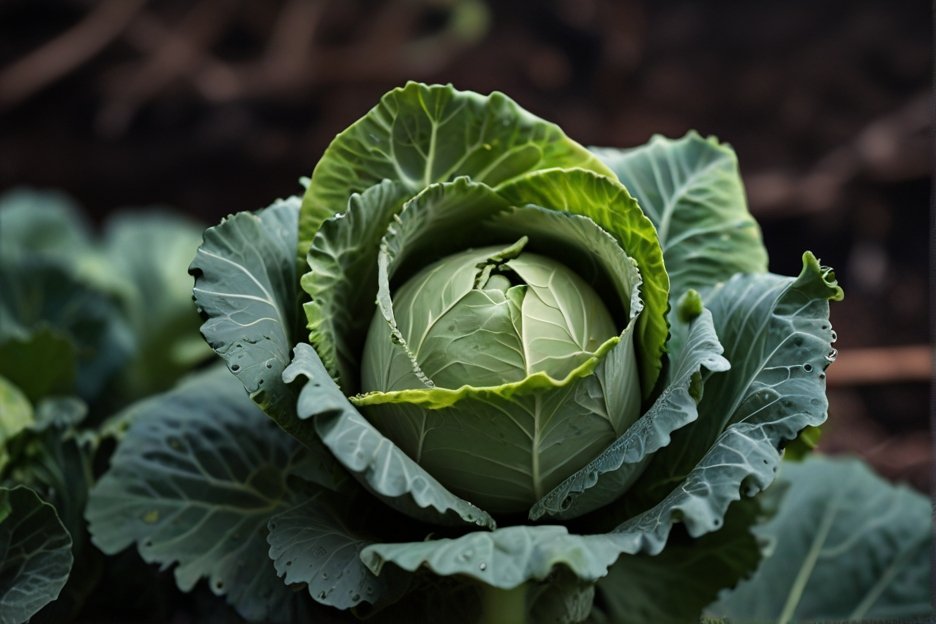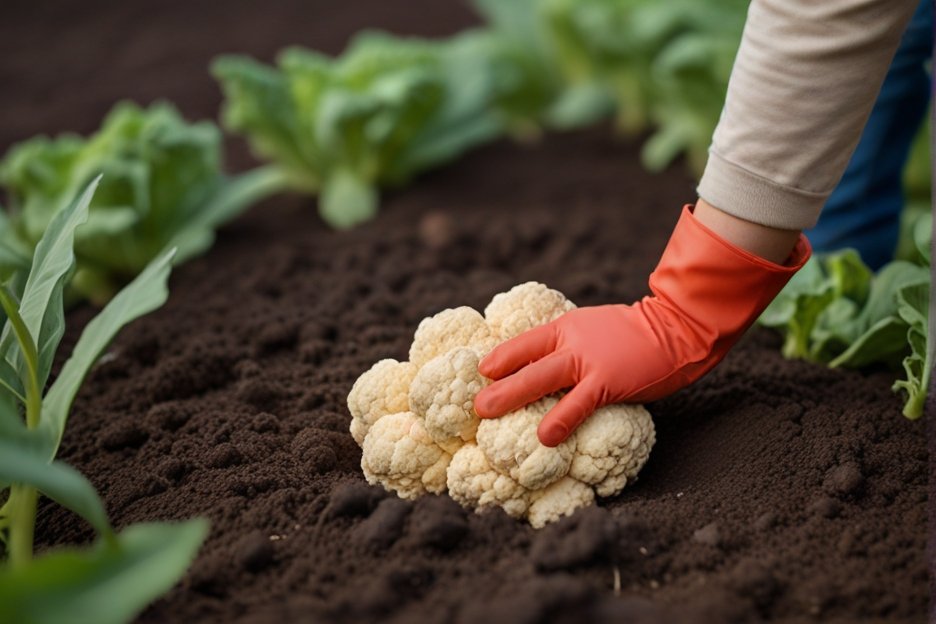
Hey there, green thumbs! Are you ready to take your vegetable garden to the next level?
Today, we’re diving deep into the world of irrigation systems.
Say goodbye to the days of lugging around hoses and watering cans, because we’re about to revolutionize the way you nourish your veggies.
Benefits of Having an Irrigation System
Consistent watering
Your garden receives just the right amount of water every time, regardless of whether you’re there to water it or not. It ensures that each plant gets its fair share of hydration.
- Read also: Mastering the Art of Drip Irrigation for Tomatoes
- Read also: A DIY Potted Plant Watering System Guide
Effortless maintenance
Say goodbye to the days of lugging around heavy watering cans or wrestling with tangled hoses.
With an irrigation system, watering becomes a hands-free task.
Simply set up your system, program it to water at the optimal times, and let it do its thing.
Saves time and effort
Manually watering a vegetable garden can be a time-consuming chore, especially during hot summer months.
Irrigation systems automate the process, freeing up your valuable time.
You can set timers and schedules, letting the system handle the watering while you focus on other tasks.
Weather adaptability
Mother Nature can be unpredictable, but an irrigation system helps you stay one step ahead.
Whether it’s scorching hot or pouring rain, your system will adjust accordingly, ensuring that your plants receive the water they need to thrive.
No more worrying about underwatering during dry spells or overwatering during rainy periods – your irrigation system has got you covered.
Water conservation
By delivering water directly to the root zone of each plant, they minimize wastage and ensure that every drop counts.
Plus, many systems come with features like timers and sensors to further reduce water usage and promote sustainability.
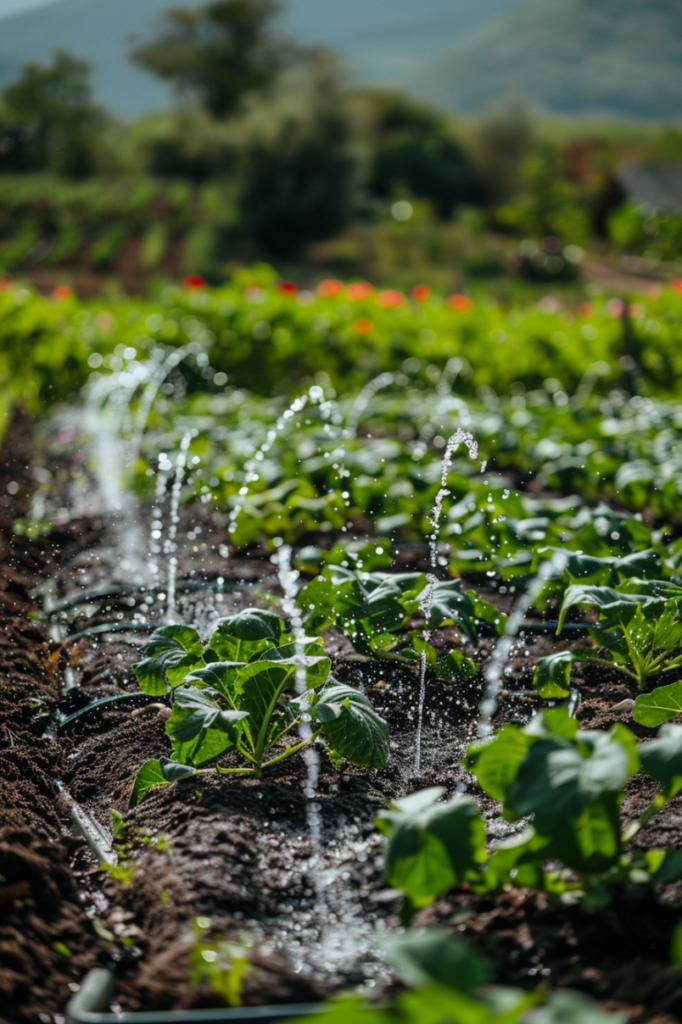
Types of Irrigation Systems
There are several irrigation systems available for vegetable gardens, each with its own advantages and disadvantages.
The best choice for your garden will depend on factors such as size, plant types, budget, and water pressure. Here’s a closer look at the most common types of irrigation systems:
Drip irrigation
Drip irrigation is a highly efficient system that delivers water directly to the root zone of plants through a network of emitters, tiny openings in hoses or tubing that release water slowly.
This method minimizes water waste due to evaporation and runoff, making it ideal for water conservation.
Drip irrigation is also effective in reducing weed growth and the spread of diseases that can occur with overhead watering.
Pros
- Highly efficient water use
- Reduces water waste due to evaporation and runoff
- Delivers water directly to plant roots
- Minimizes weed growth
- Reduces the spread of diseases
Cons
- Higher initial cost compared to some other systems
- Requires more planning and installation compared to sprinklers
- Potential for clogging of emitters if not properly maintained
Soaker hoses
Soaker hoses are perforated hoses that lie directly on the soil surface or are buried shallowly.
Water seeps out of the perforations along the length of the hose, slowly watering the surrounding soil.
Soaker hoses are a relatively inexpensive and easy-to-install option for small vegetable gardens.
Pros
- Easy to set up and use
- Affordable
Cons
- Less efficient in water use compared to drip irrigation
- Can lead to uneven watering if not positioned carefully
- May encourage weed growth near the hose
Sprinkler systems
Sprinkler systems distribute water overhead through sprinklers that spray water in a circular or oscillating pattern.
While sprinklers can quickly cover large areas, they are not very water-efficient due to evaporation, especially in hot, windy climates.
Additionally, overhead watering can promote fungal diseases on some vegetables.
Pros
- Quick and easy way to water large areas
- May be beneficial in hot climates for cooling plants
Cons
- Less water-efficient than drip irrigation or soaker hoses
- Can promote fungal diseases on some vegetables
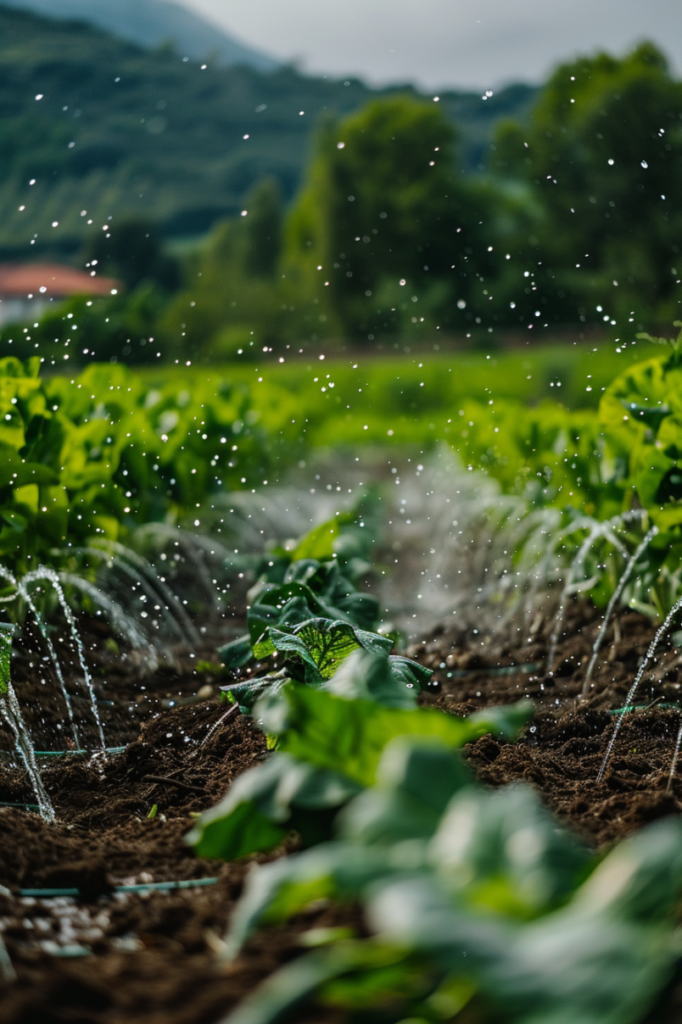
Choosing the Right System for Your Vegetable Garden
When it comes to choosing the right irrigation system for your vegetable garden, there are several factors to consider.
Let’s break it down:
Garden size and layout
One of the first things to think about is the size and layout of your garden.
If you have a small, compact garden with closely spaced plants, a drip irrigation system might be the perfect fit.
Its precise watering capabilities ensure that each plant receives the right amount of water without wasting any.
On the other hand, if you have a larger garden with wide-open spaces, a sprinkler system might be more practical.
It can cover a larger area with ease, providing a refreshing shower for your veggies.
Budget
Drip irrigation systems tend to be more expensive upfront due to the cost of tubing, emitters, and other components.
However, they can save you money in the long run by conserving water and reducing water bills.
Sprinkler systems are generally more affordable upfront, but they may require more water and maintenance over time.
Soaker hoses are often the most budget-friendly option, offering a simple and cost-effective way to water your garden.
Watering preferences
Consider your personal watering preferences when selecting an irrigation system.
Are you someone who likes to set it and forget it, or do you prefer to have more control over the watering process?
If you lead a busy lifestyle and prefer a hands-off approach, a sprinkler system with a timer might be the way to go.
On the other hand, if you enjoy getting hands-on in the garden and want to ensure each plant gets individual attention, a drip irrigation system might be more suited to your needs.
Environmental factors
Don’t forget to take into account environmental factors such as climate and soil type. In hot, arid climates, water conservation is key, making drip irrigation an attractive option.
Similarly, if you have sandy or fast-draining soil, a system that delivers water directly to the roots, like drip irrigation or soaker hoses, can help ensure your plants stay hydrated.
On the other hand, if you live in a cooler, wetter climate, a sprinkler system may be sufficient for your needs.
Maintenance requirements
Consider the maintenance requirements of each irrigation system before making your decision.
Drip irrigation systems require regular checks to ensure that emitters are not clogged and that tubing is not damaged.
Sprinkler systems may need adjustments to ensure even coverage and prevent wastage.
Soaker hoses are generally low-maintenance but may need occasional cleaning to remove debris and prevent clogs.
How to Set Up New Irrigation System
Setting up a new irrigation system for your vegetable garden may seem daunting at first, but fear not – with the right guidance, it’s easier than you think.
Here’s a step-by-step guide to help you get started:
Drip irrigation system
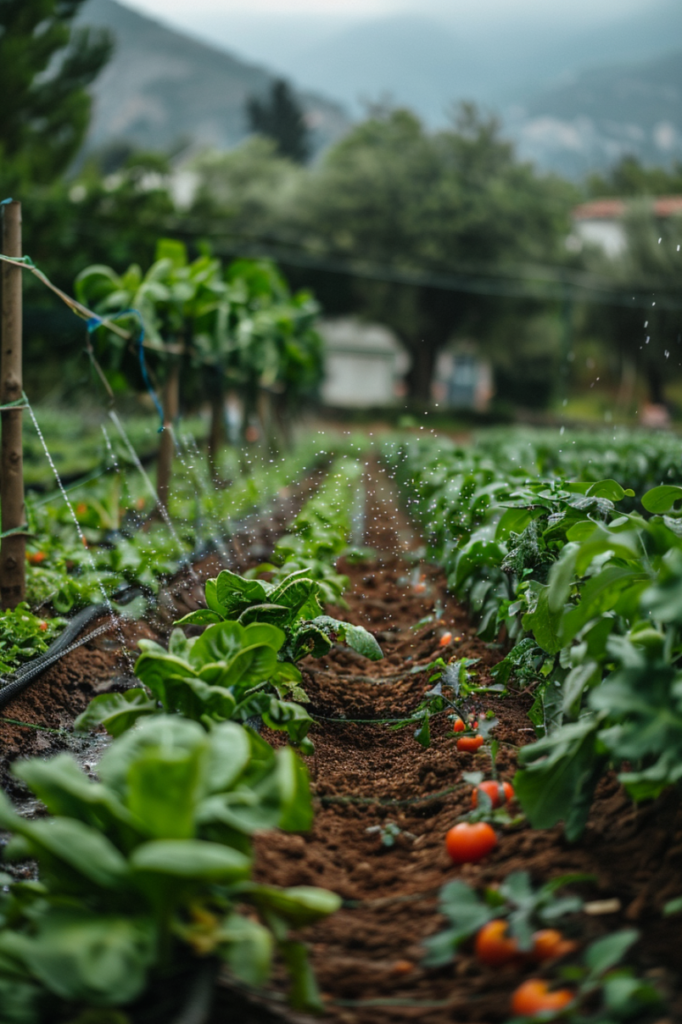
Materials needed
- Main supply line (drip tubing)
- Drip emitters or drip lines
- Connectors, elbows, tees
- Filter
- Pressure regulator
- Timer (optional)
- Stakes or supports
Instruction
Step 1: Plan layout
Determine the layout of your vegetable garden and lay out the main supply line (drip tubing) along the rows of your plants.
Step 2: Install main line
Attach the main supply line to your water source (usually an outdoor faucet) using appropriate connectors. Ensure the line is secured with stakes or supports.
Step 3: Install emitters
Place drip emitters or drip lines along the main supply line at intervals appropriate for your plants’ water needs. Emitters should be positioned near the base of each plant.
Step 4: Install filter and pressure regulator
Install a filter and pressure regulator to prevent clogging and ensure consistent water pressure throughout the system.
Step 5: Connect components
Connect all components securely, using connectors, elbows, and tees as needed to navigate around obstacles and reach all areas of your garden.
Step 6: Test system
Turn on the water to test the system. Check for leaks, proper water pressure, and coverage.
Make adjustments as needed.
Step 7: Install timer (Optional)
If desired, install a timer to automate your irrigation schedule.
Set the timer to water your garden at appropriate intervals based on weather conditions and plant needs.
Soaker hose system
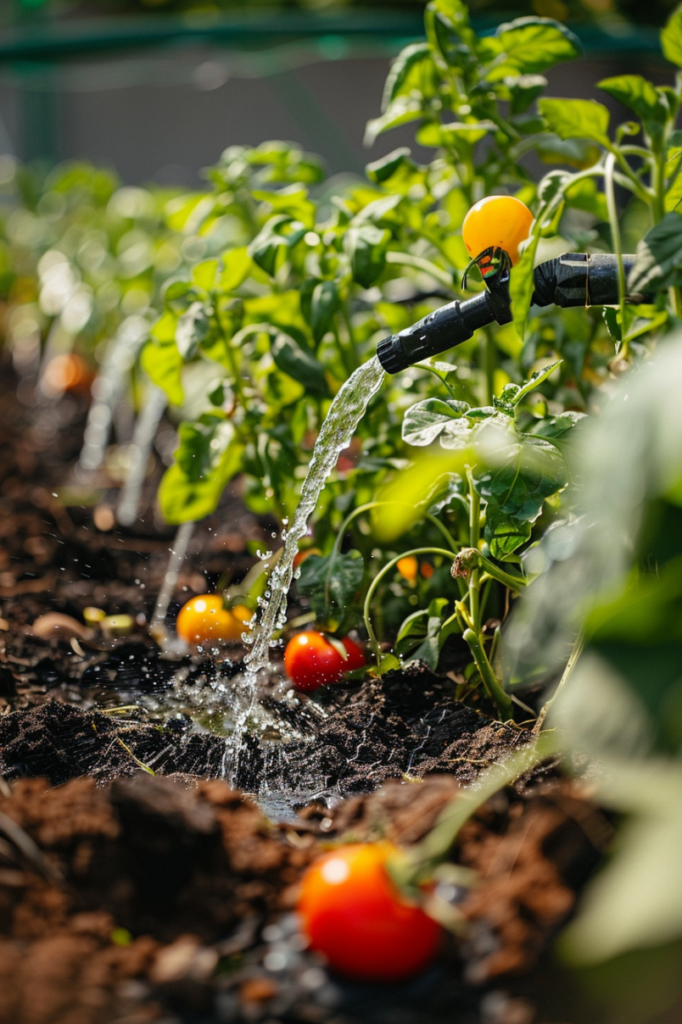
Materials needed
- Soaker hoses
- Hose bib (outdoor faucet) adapter
- Timer (optional)
- Stakes or pins
Instruction
Step 1: Plan layout
Lay out the soaker hoses along the rows of your vegetable garden, positioning them close to the base of your plants.
Step 2: Connect to water source
Attach the soaker hoses to your water source (outdoor faucet) using a hose bib adapter.
Step 3: Secure hoses
Secure the soaker hoses in place with stakes or pins to prevent them from moving or shifting.
Step 4: Test system
Turn on the water to test the system. Check for leaks and ensure even water distribution along the length of the hoses.
Step 5: Install Timer (Optional)
Install a timer if you want to automate your watering schedule. Set the timer to water your garden as needed.
Sprinkler system
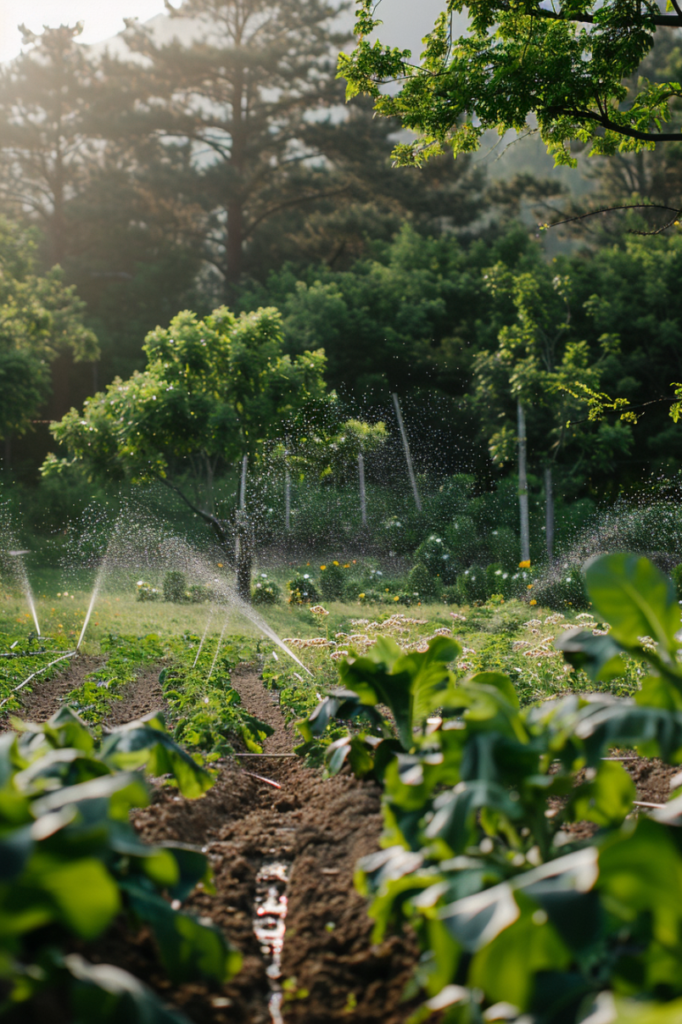
Materials needed
- Sprinkler heads
- PVC pipes
- PVC fittings (elbows, tees, connectors)
- PVC primer and cement
- Timer (optional)
- Shovel
- Pipe cutter or hacksaw
Instruction
Step 1: Plan layout
Design the layout of your sprinkler system, taking into account the coverage area of each sprinkler head and the water needs of your plants.
Step 2: Install PVC pipes
Dig trenches for the PVC pipes according to your planned layout.
Lay the PVC pipes in the trenches, connecting them with elbows, tees, and connectors as needed.
Step 3: Install sprinkler heads
Attach sprinkler heads to the PVC pipes at appropriate intervals.
Ensure the sprinkler heads cover the entire garden area evenly.
Step 4: Connect to water source
Connect the PVC pipes to your water source (usually a main water line or outdoor faucet) using appropriate fittings and adapters.
Step 5: Test system
Turn on the water to test the system.
Check for leaks, proper water pressure, and coverage. Adjust the position and angle of sprinkler heads as needed.
Step 6: Install timer (Optional)
Install a timer to automate your watering schedule if desired.
Set the timer to water your garden at optimal times based on weather conditions and plant needs.
- Read also: A Guide to DIY Plant Watering Globes
- Read also: A Guide to Building Your Own Tomato Plant Watering System
Conclusion
And there you have it – your complete guide to irrigation systems for vegetable gardens!
Whether you’re a seasoned pro or a newbie gardener, investing in an irrigation system is sure to pay off in healthier plants and bigger harvests.
So why wait?
Get out there and start watering smarter, not harder!
FAQs
Absolutely! While hand watering can certainly do the trick, an irrigation system takes the guesswork out of watering and ensures your plants get the right amount of moisture every time.
Not at all! Most systems come with detailed instructions that make installation a breeze. Plus, there are plenty of resources online to help you along the way.
That depends on factors like the size of your garden and the type of system you choose. However, irrigation systems are generally more efficient than hand watering, so you’ll likely use less water in the long run.

